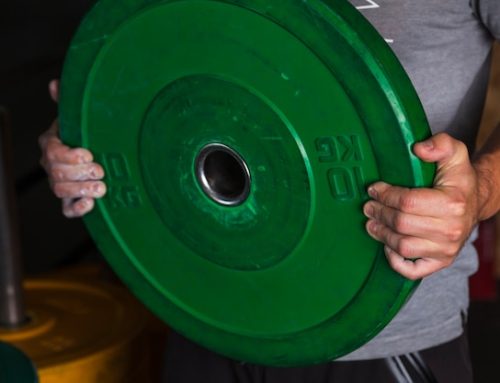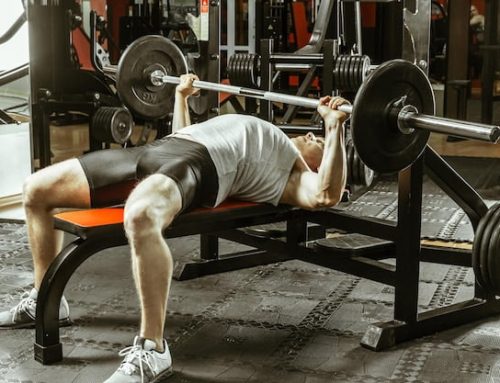The Myth of High-Rep Weightlifting
When it comes to building muscle mass, there are a lot of different theories out there on what works best. One common debate is whether high-rep weightlifting is more effective than low-rep weightlifting. While some people argue that high reps are the key to building muscle, there is actually little evidence to support this claim. In fact, many bodybuilders believe that low-rep training is actually more effective for building muscle mass.
What Are High-Rep and Low-Rep Weightlifting?
Before we dive into the specifics of high-rep vs. low-rep training, let’s define our terms. High-rep weightlifting involves performing exercises for a high number of repetitions, typically in the range of 12-15 reps per set or higher. Low-rep weightlifting, on the other hand, involves performing exercises for a lower number of repetitions, typically in the range of 1-5 reps per set.
Many Sets vs. Few Sets
Another important factor to consider when discussing muscle growth is the number of sets performed per exercise. Some people believe that doing multiple sets of an exercise is necessary for maximum muscle growth, while others argue that a single set is sufficient. In reality, the answer is somewhere in between.
According to a meta-analysis published in the Journal of Strength and Conditioning Research, performing multiple sets of an exercise is more effective for muscle growth than doing a single set. The study found that performing 4-6 sets per exercise led to significantly greater gains in muscle mass than doing just one set. However, doing more than 6 sets per exercise did not lead to any additional muscle growth.
What is the Optimal Set and Rep Range for Muscle Growth?
So, if multiple sets are necessary, what is the optimal set and rep range for muscle growth? According to most experts, the sweet spot seems to be somewhere in the range of 6-12 reps per set. This range is often referred to as the “hypertrophy range” because it is thought to be the most effective for stimulating muscle growth.
One reason why this range may be particularly effective is that it taps into both the fast-twitch and slow-twitch muscle fibers. Fast-twitch fibers are responsible for explosive, powerful movements, while slow-twitch fibers are better suited for endurance activities. By doing sets in the 6-12 rep range, you can target both types of muscle fibers, which can lead to more significant muscle growth over time.
Why High-Rep Weightlifting Isn’t Always Effective
While high-rep weightlifting can be a useful tool for improving muscular endurance, it is not always the best choice for building muscle mass. One of the primary reasons for this is that high-rep training typically does not involve very heavy weights. When you lift lighter weights for high reps, you may be able to improve your endurance, but you are not necessarily challenging your muscles enough to promote significant growth.
In order to build muscle, you need to create a stimulus that is strong enough to cause micro-damage to your muscle fibers. This damage, known as micro-tears, triggers a process called muscle protein synthesis, which is what ultimately leads to muscle growth. While high-rep training can create some micro-damage, it is typically not enough to significantly stimulate muscle protein synthesis.
Why Low-Rep Weightlifting Works
On the other hand, low-rep weightlifting typically involves heavier weights and fewer reps per set. This type of training places a greater emphasis on maximal strength, which can translate to greater muscle growth over time. When you lift heavy weights, you create a greater amount of micro-damage to your muscle fibers, which triggers a greater stimulus for muscle protein synthesis.
In addition to being more effective for building muscle, low-rep weightlifting also has some other benefits. For example, lifting heavy weights can help you to increase your bone density, which is important for preventing osteoporosis later in life.
The Bottom Line
When it comes to building muscle mass, doing multiple sets of an exercise in the 6-12 rep range is generally more effective than doing a single set or performing high-rep weightlifting. While high-rep training can improve your muscular endurance, it is typically not as effective for promoting significant muscle growth. Low-rep weightlifting, on the other hand, can help you to build muscle mass more quickly by creating a strong stimulus for muscle protein synthesis.
Ultimately, the best approach for building muscle will depend on your individual goals and needs. However, if your primary goal is to build muscle mass, it is generally a good idea to focus on doing multiple sets of each exercise in the 6-12 rep range, lifting heavy enough weights to create a sufficient stimulus for muscle growth. With consistent effort and a well-designed training plan, you can make significant progress towards your muscle-building goals.






